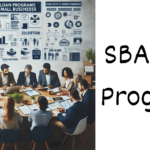The Complex Landscape of Student Loan Debt Relief
Student loan debt has become a pressing issue in recent years, with millions of borrowers struggling to repay their loans. As a result, there has been a growing demand for student loan debt relief programs and policies. However, navigating the legal framework surrounding these programs can be challenging, especially when it comes to understanding Supreme Court decisions on student loan debt relief.
The Role of the Supreme Court
The Supreme Court plays a crucial role in interpreting and applying the law, including issues related to student loan debt relief. Their decisions have a significant impact on borrowers, lenders, and policymakers alike. It is important to understand the key rulings made by the Supreme Court to gain clarity on the legal landscape surrounding student loan debt relief.
Key Supreme Court Decisions on Student Loan Debt Relief
1. Brunner Test (1987)
In the case of Brunner v. New York State Higher Education Services Corp., the Supreme Court established a three-part test to determine eligibility for student loan discharge in bankruptcy. This test requires borrowers to demonstrate:
- That they cannot maintain a minimal standard of living if forced to repay the loan.
- That the financial difficulties are likely to persist for a significant portion of the repayment period.
- That they have made good faith efforts to repay the loan.
This ruling set a high bar for borrowers seeking student loan discharge in bankruptcy, making it challenging for many to obtain relief.
2. Undue Hardship Standard (1998)
In the case of United Student Aid Funds, Inc. v. Espinosa, the Supreme Court clarified the undue hardship standard for student loan discharge in bankruptcy. The Court held that borrowers must prove that repaying the loan would impose an undue hardship, which requires a showing of:
- That the borrower cannot maintain a minimal standard of living while repaying the loan.
- That the borrower’s financial situation is unlikely to improve in the future.
- That the borrower has made good faith efforts to repay the loan.
This ruling reinforced the high burden of proof required to obtain student loan discharge in bankruptcy.
3. FDCPA Protections (2017)
In Henson v. Santander Consumer USA Inc., the Supreme Court addressed the issue of whether debt buyers are considered “debt collectors” under the Fair Debt Collection Practices Act (FDCPA). The Court ruled that debt buyers who purchase defaulted debt are not subject to the FDCPA’s provisions, as they are not collecting debts owed to another entity.
This decision has implications for borrowers seeking relief from debt collectors, as it limits the protections available under the FDCPA.
The Impact on Borrowers
Supreme Court decisions on student loan debt relief have had a significant impact on borrowers. The high standards set for student loan discharge in bankruptcy make it challenging for many borrowers to obtain relief. Additionally, the limitations placed on the FDCPA’s protections can make it harder for borrowers to navigate the debt collection process.
Looking Ahead
The landscape of student loan debt relief is constantly evolving, and it is important for borrowers, lenders, and policymakers to stay informed about the latest Supreme Court decisions. Understanding the legal framework surrounding student loan debt relief is crucial for advocating for fair and effective policies that address the challenges faced by borrowers.
While Supreme Court decisions may seem complex, they play a vital role in shaping the legal landscape surrounding student loan debt relief. By decoding these decisions, we can gain a better understanding of the challenges and opportunities that lie ahead.










